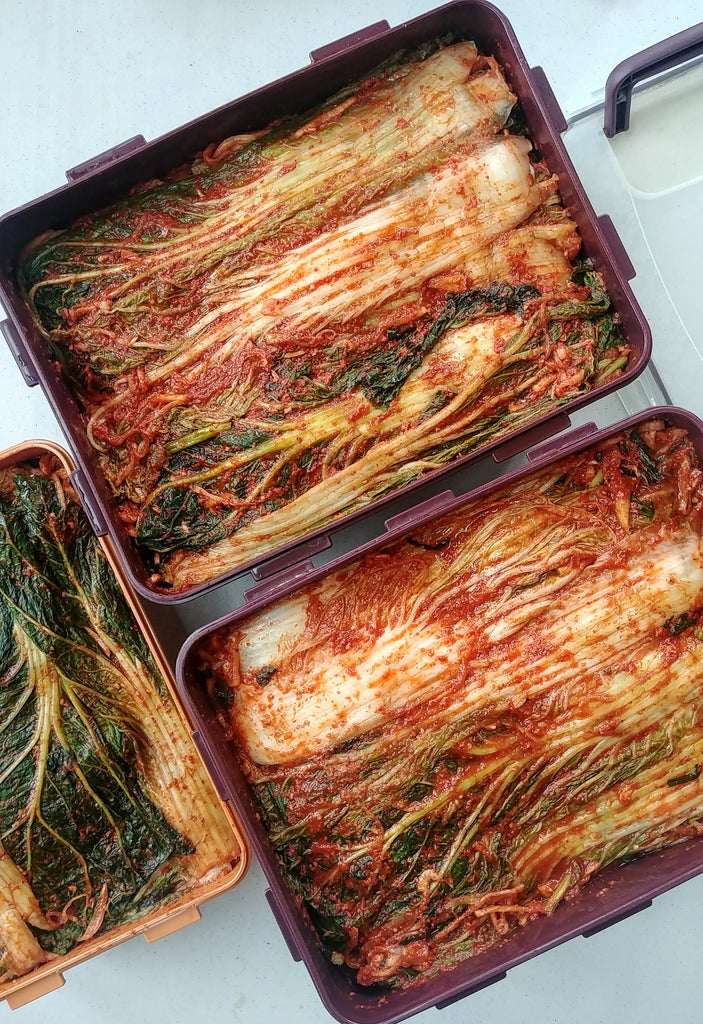I grew up watching my mother make kimchi with 100 to 200 heads of napa cabbages (baechu) for her kimjang, an annual kimchi-making event in late fall. This was never a small task, but she always had lots of helping hands from her neighborhood friends, who would go from house to house to help each other, having fun and sharing delicious food. However, my mother’s biggest helper was my father! Uncommon for his generation of Korean men, he spent a lot of time helping his wife with cooking and other house chores, especially on kimchi making days. He would peel a huge pile of garlic, help prep other ingredients, rinse salted cabbages, and finally pack the kimchi into the large clay pots he had buried in the ground.
Even after moving to America, my mother continued her kimjang, although it had to be on a much smaller scale. She did the best she could with limited availability of ingredients and storage space. Unlike her kimjang in Korea, she didn’t have friends to help her out. It was no longer a fun, communal event for her. But, she had one person she could always count on -- her husband! Decades later, even as my mother’s health was declining, they were still able to make kimchi for themselves. My well-trained father did all the labor to make kimchi with my mother’s culinary direction.
For many years, it was very hard to find good kimchi ingredients such as gochugaru here in the States. So, every time my mother visited Korea, she brought back large bags full of gochugaru in her luggages. My mother-in-law, on the other hand, had turned her entire backyard into a vegetable garden, and grew chili peppers, among other Korean vegetables, to produce enough gochugaru for the entire year. Nothing could stop them from making good kimchi for their families.
I make a fair amount of kimchi year round. During peak season, I make a big box or two full of napa cabbages (8-10 heads/box) and repeat as necessary. There can never be too much kimchi in Korean homes. We eat kimchi everyday, and the old sour kimchi is the best ingredient to cook with. I also provide regular supplies of kimchi to my grownup children. Both my late mother and mother-in-law did that for us for many years, so I am gladly continuing the tradition.
My almost 90 year old father now comes over to help me make kimchi. He reminds me that kimjang means so much more than preserving vegetables or making a large batch side dish. It’s a tradition, memories, caring, and sharing!
Hyosun Ro is known for her blog "Korean Bapsang: A Korean Mom's Home Cooking."

